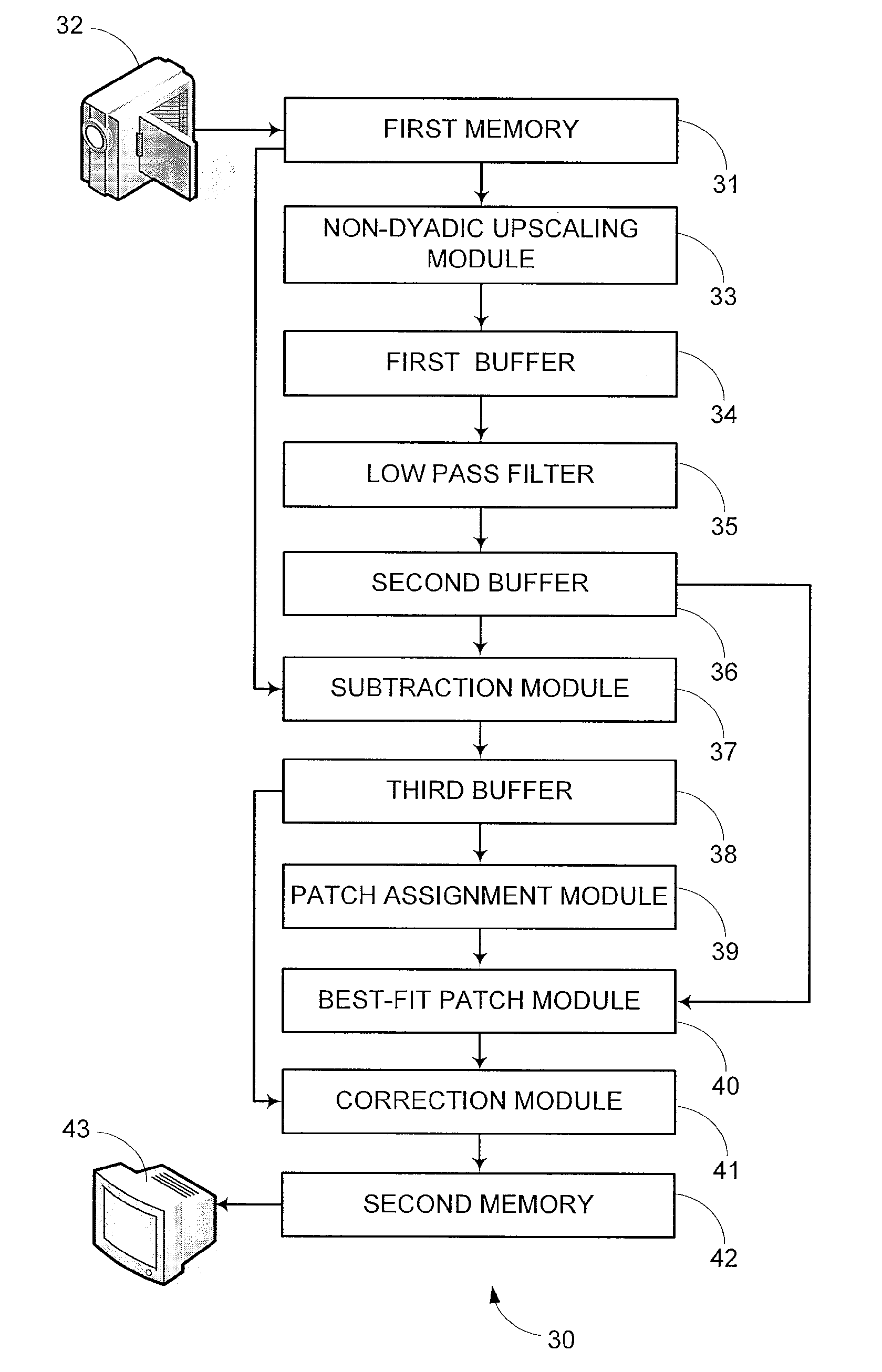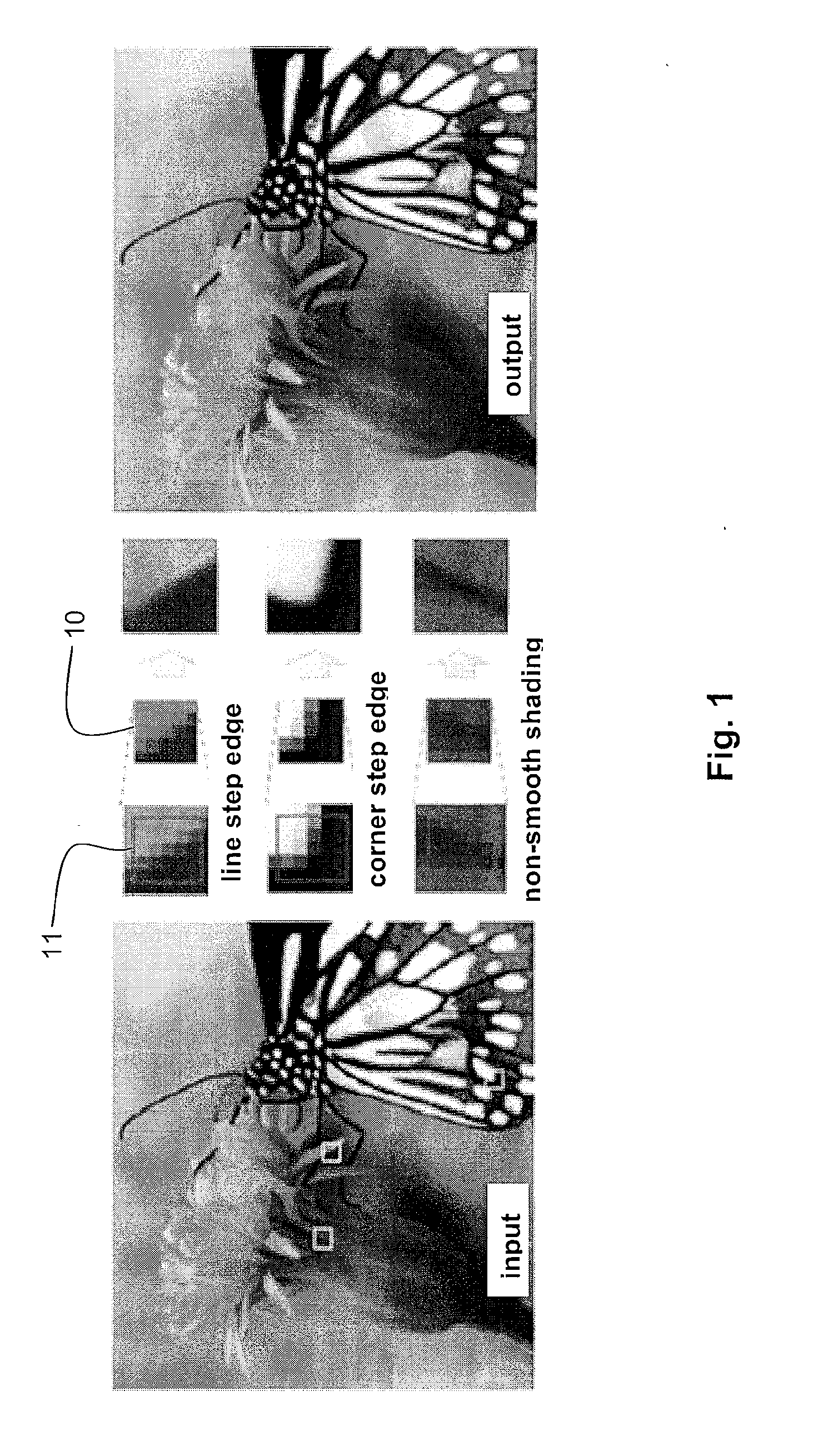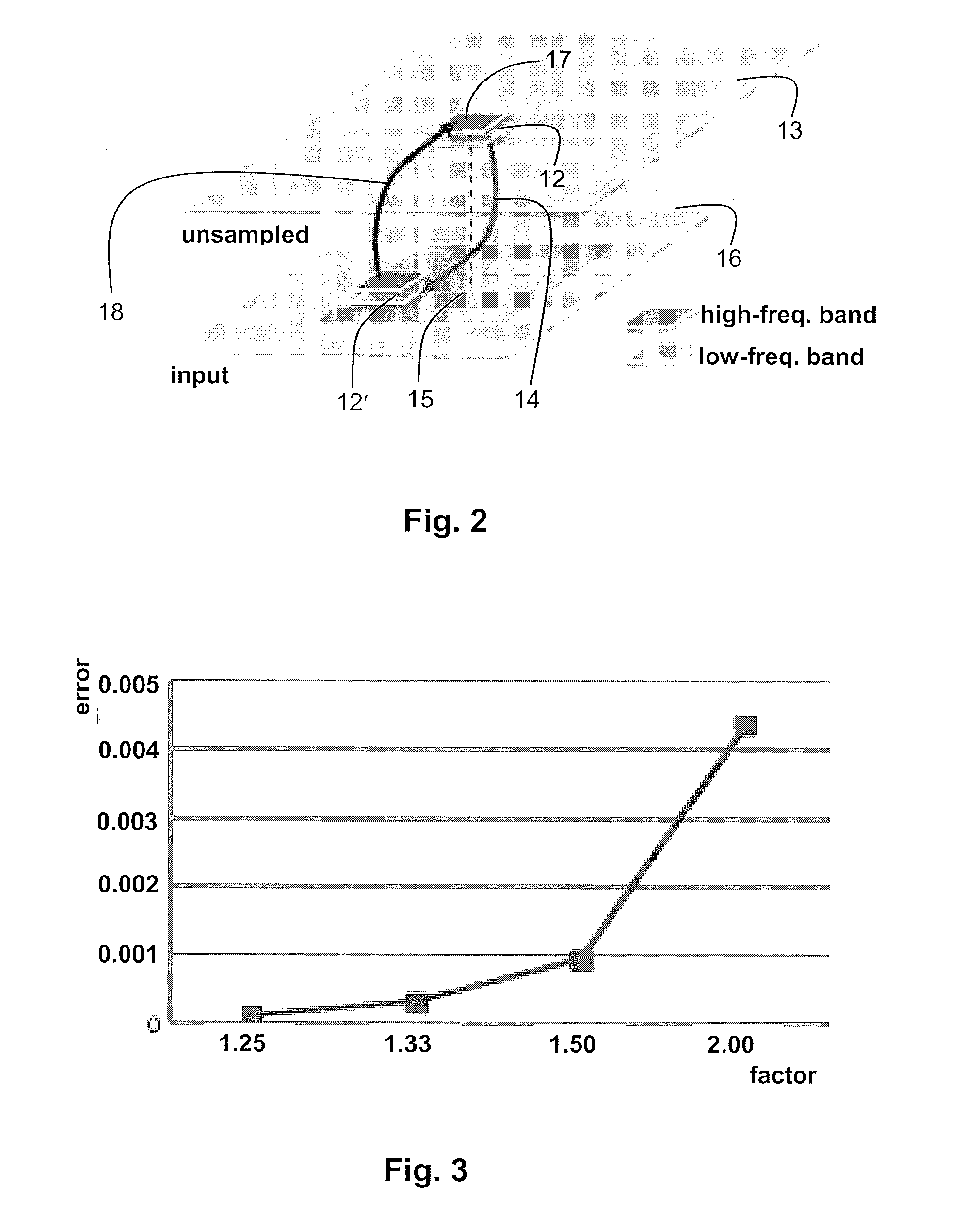Method and system for generating an output image of increased pixel resolution from an input image
- Summary
- Abstract
- Description
- Claims
- Application Information
AI Technical Summary
Benefits of technology
Problems solved by technology
Method used
Image
Examples
Embodiment Construction
Upscaling Scheme
[0066]The basic upscaling scheme used by the invention is closely related to the framework previously used [7, 21, 24]. However, we replace most of the components it uses with novel, application-specific, components that we now describe. The first contribution is an alternative source of example patches that we propose to use. Below we discuss and measure a refined scale similarity property in natural images. The similarity assumptions used by existing methods exploit similarities across the image and at multiple scales of it. We refine this assumption and observe that various singular features in natural images are similar to themselves under small scaling factors. This property, which we call local self-similarity, allows us to search and find relevant example patches in very restricted neighborhoods around the same relative coordinates in the input image. This approach reduces substantially the nearest-patch retrieval times compared to global image searches or sea...
PUM
 Login to View More
Login to View More Abstract
Description
Claims
Application Information
 Login to View More
Login to View More - R&D
- Intellectual Property
- Life Sciences
- Materials
- Tech Scout
- Unparalleled Data Quality
- Higher Quality Content
- 60% Fewer Hallucinations
Browse by: Latest US Patents, China's latest patents, Technical Efficacy Thesaurus, Application Domain, Technology Topic, Popular Technical Reports.
© 2025 PatSnap. All rights reserved.Legal|Privacy policy|Modern Slavery Act Transparency Statement|Sitemap|About US| Contact US: help@patsnap.com



